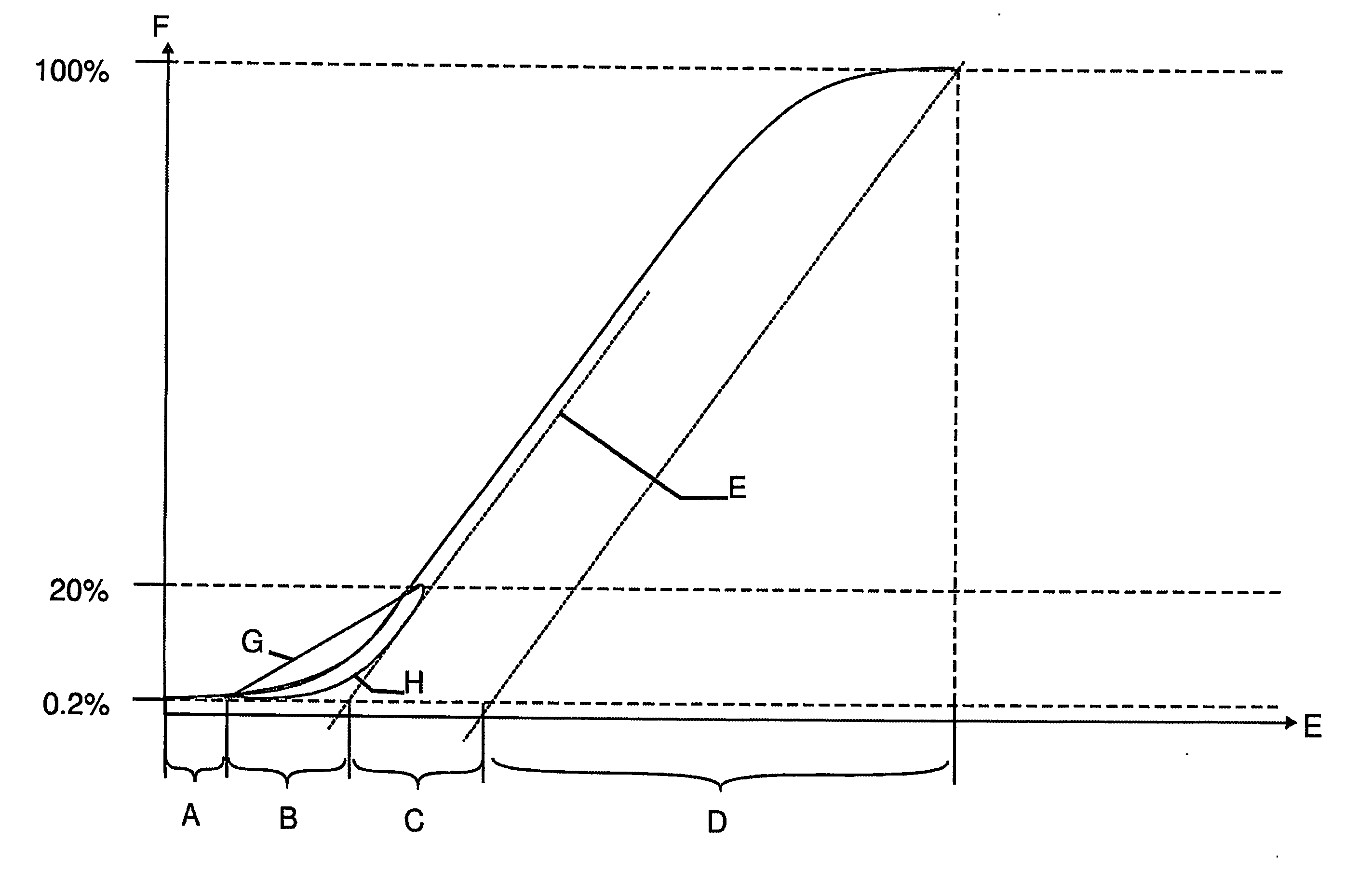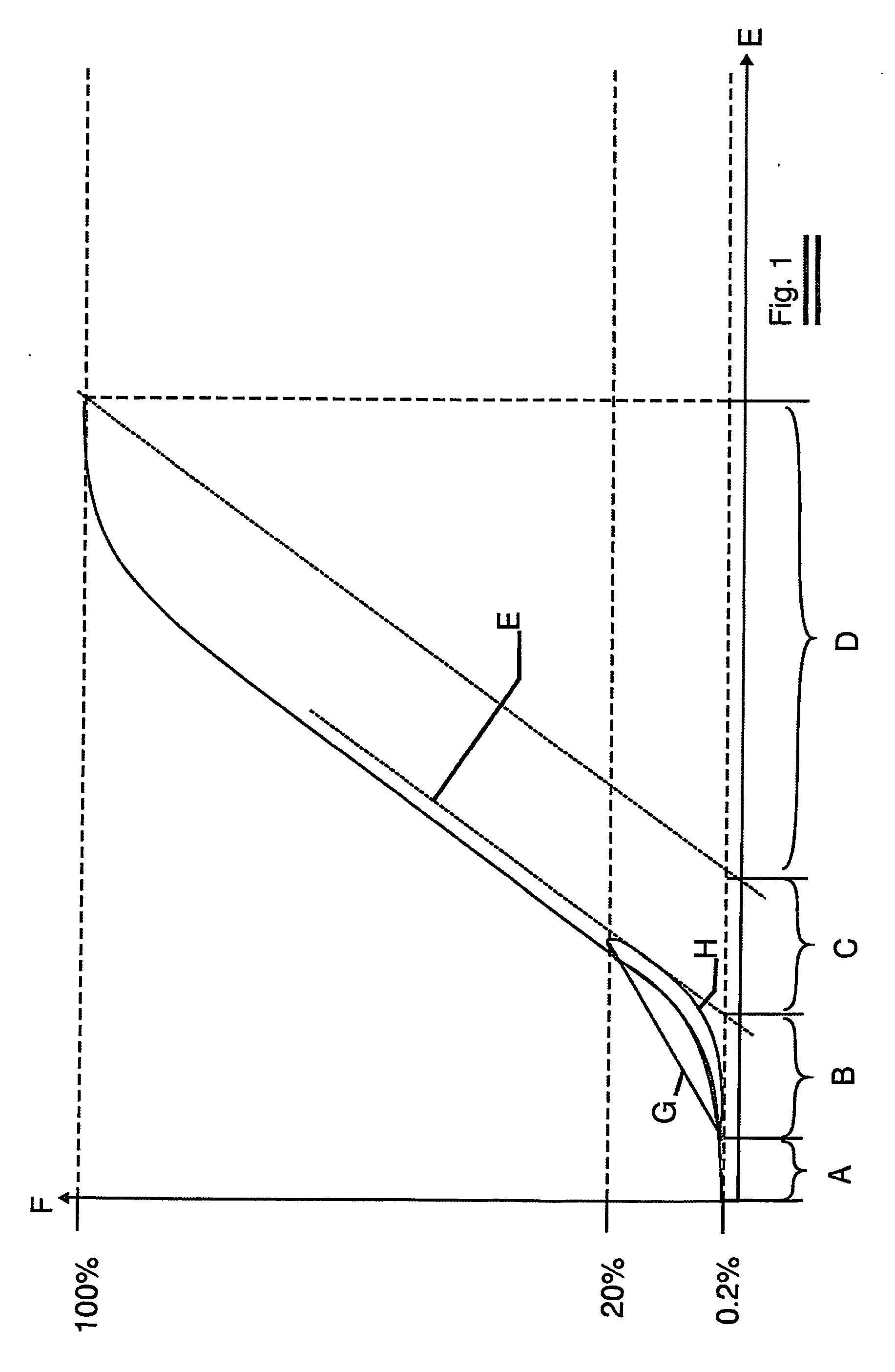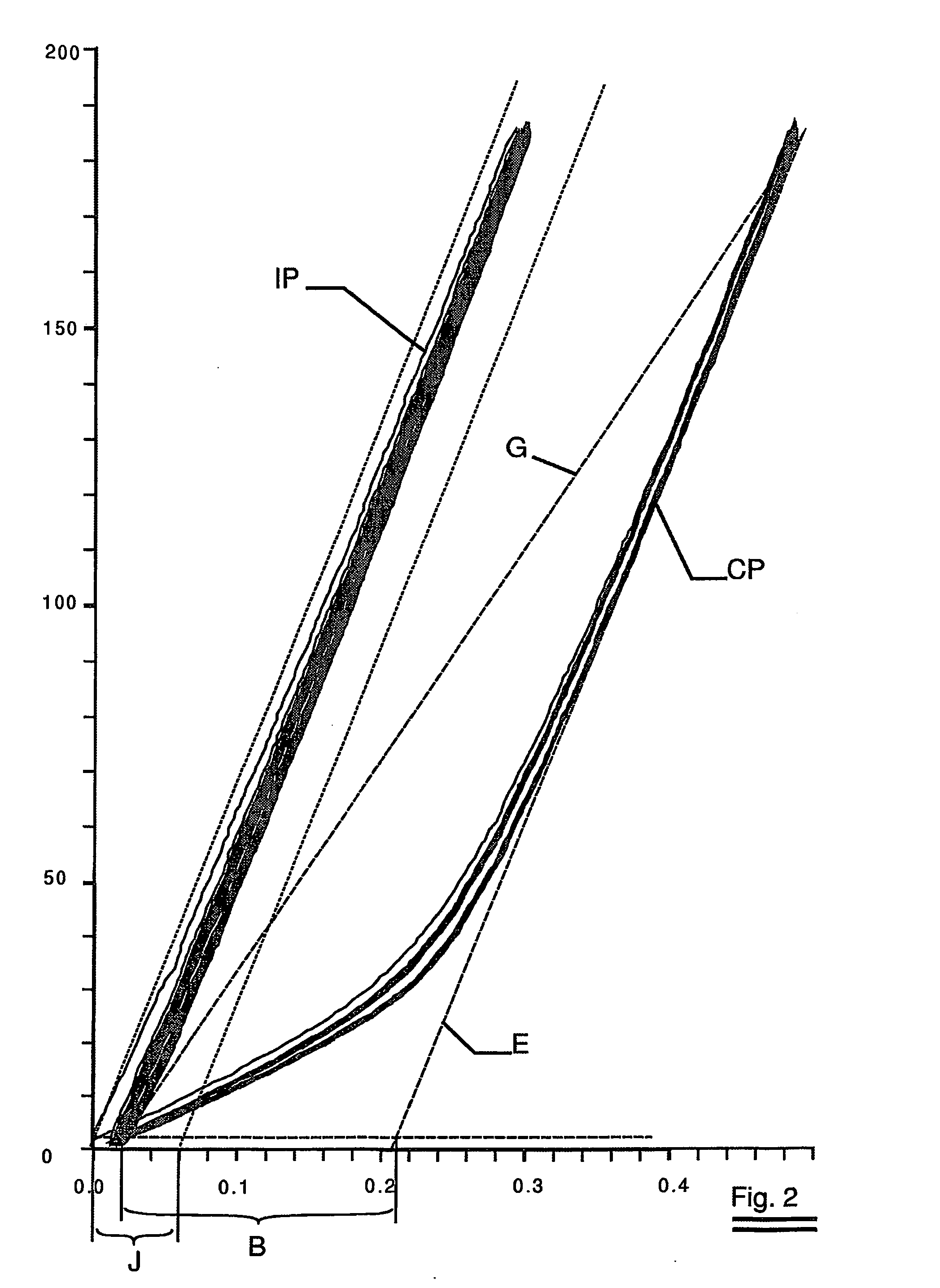Fine steel cord with a low structural elongation
a technology of structural elongation and fine steel, which is applied in the direction of yarn, mechanical equipment, coatings, etc., can solve the problems of ‘dimensional control, premature wear of belts or even teeth jumping out of gears, and insufficient tolerances as set forth in din 7721 standard, so as to increase the overall modulus of cords and reduce the elongation of belts
- Summary
- Abstract
- Description
- Claims
- Application Information
AI Technical Summary
Benefits of technology
Problems solved by technology
Method used
Image
Examples
Embodiment Construction
[0061] In a first preferred embodiment, the inventors have produced a 7×3 type of cord characterised by the following formula:
[(3×0.15)9 s+6×(3×0.15)9 s]8 Z
i.e. a core strand consisting of 3 filaments twisted together with a lay length of 9 mm in S direction is combined with 6 outer strands again consisting of 3 filaments twisted together with a lay length of 9 mm in S direction to a cord. The strands are twisted in to the cord with a lay length of 8 mm in Z direction. The filaments were plain carbon steel filaments having a carbon content of about 0.725 wt. % C and having a hot dip galvanised zinc coating. The cord was produced from the filaments according the conventional process and the inventive process. The cord has a metal cross-sectional area of 0.371 mm2 (acc. DIN 3051 i.e. sum of filament cross sections).
[0062] First the conventional process will be explained by means of FIG. 4a. Thereafter the inventive changes to this process will be highlighted. A strand spool 2—cont...
PUM
| Property | Measurement | Unit |
|---|---|---|
| structural elongation | aaaaa | aaaaa |
| structural elongation | aaaaa | aaaaa |
| structural elongation | aaaaa | aaaaa |
Abstract
Description
Claims
Application Information
 Login to View More
Login to View More - R&D
- Intellectual Property
- Life Sciences
- Materials
- Tech Scout
- Unparalleled Data Quality
- Higher Quality Content
- 60% Fewer Hallucinations
Browse by: Latest US Patents, China's latest patents, Technical Efficacy Thesaurus, Application Domain, Technology Topic, Popular Technical Reports.
© 2025 PatSnap. All rights reserved.Legal|Privacy policy|Modern Slavery Act Transparency Statement|Sitemap|About US| Contact US: help@patsnap.com



